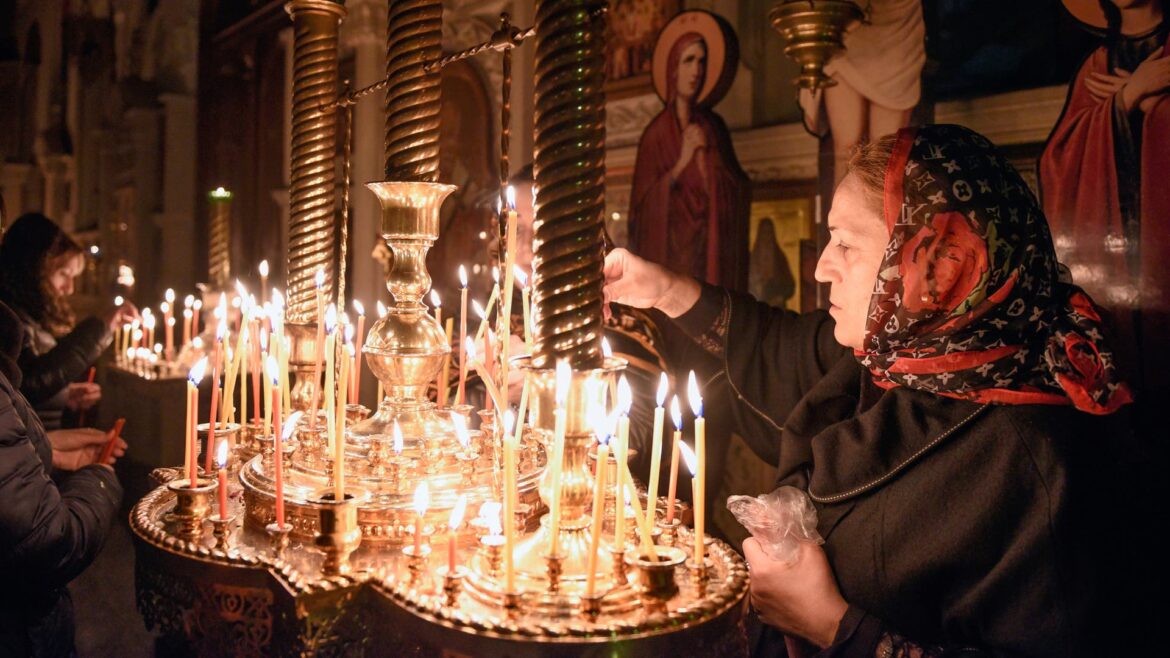The date of Orthodox Easter—also known as Pascha—differs each year due to the unique ecclesiastical traditions embraced by the Eastern Orthodox Church. This variance arises primarily from the use of the Julian calendar, which lags behind the Gregorian calendar employed by most of the Western world. In 2024, Orthodox Christians will celebrate Easter on May 5. This observance invites believers to reflect on the profound spiritual nuances that separate it from Western Easter, a celebration filled with rich tradition and theological significance.
Orthodox Easter is centered around the resurrection of Jesus Christ, a moment that signifies victory over death and sin. This solemnity forms its core message, inviting deeper contemplation on the transformative power of faith. The period leading up to Pascha is marked by Great Lent, a time of fasting, prayer, and penance intended to purify one’s spirit in preparation for the joyous celebration of the resurrection. In contrast, the Western Easter, observed on March 31 in 2024, follows a different liturgical calendar and is often associated with more commercialized celebrations, thus altering the spiritual preparation involved.
One of the striking differences between the two observances lies in their liturgical practices. In Orthodox Christianity, the Holy Week preceding Pascha is filled with solemn services that include the reading of the Gospels, the procession of the Holy Fire, and the joyous Paschal Vigil that takes place late on Saturday evening. As midnight approaches, the church bells toll to herald Christ’s resurrection, followed by the resounding proclamation, “Christ is Risen!” This exclamation becomes a communal affirmation of faith, reverberating through the hearts of worshippers.
By contrast, Western Easter services often emphasize a contemporary worship style. Many congregations focus on themes of hope and renewal, utilizing contemporary music, colorful decorations, and community activities that can sometimes overshadow the solemnity of the occasion. This divergence illustrates not merely a discrepancy in tradition but a fundamental difference in theological emphasis. The Orthodox perspective delves deeply into the transformative journey through suffering that culminates in resurrection, whereas Western practices may lean towards celebrating the joyous moment without as much emphasis on the preparatory suffering.
The variances continue in the celebration of food and rituals. In Orthodox households, the breaking of the fast is a monumental event. Traditional dishes often consist of rich foods such as lamb, sweet breads (like kulich), dyed eggs, and various dairy products that had been abstained from during Lent. These foods carry symbolic meaning; sweets like kulich symbolize the sweetness of the resurrection, while colored eggs, often a vibrant red, symbolize the blood of Christ and the new life that emerges from the tomb. The emphasis on these symbolic foods is integral to the experience, forming a communal bond through both the sharing of meals and the sacred significance attributed to each dish.
In stark contrast, the Western Easter celebration has evolved into a more secular event, often involving Easter eggs, bunnies, and commercial activities that appeal to a broader audience. While these symbols are delightful, their origins are now often forgotten, leading to a potential dilution of the core Christian message. For many, Easter has become synonymous with springtime festivities, overshadowing the depth of its original significance.
The theological distinctions also manifest in differing views of salvation and resurrection. In the Orthodox Church, the resurrection is regarded not merely as a historical event but as a cosmic renewal that alters the very fabric of existence. The Paschal season extends beyond a single day, enveloping the faithful in a 40-day celebration, culminating in the Feast of Ascension. This approach enhances the believer’s understanding of life’s continuum and the promise of eternal life, thus fostering a profound sense of hope and reassurance.
Conversely, the Western perspective often emphasizes the individual aspect of salvation—Christ’s resurrection is seen as an act understood primarily through personal faith and repentance. While both perspectives affirm the necessity of Christ’s sacrifice, the Orthodox tradition finds beauty in the communal journey of faith, emphasizing the importance of the Church as the Body of Christ, where collective salvation unfolds through shared experiences of suffering, worship, and joy.
Engaging with these two distinct traditions invites Christians to reconsider their understanding of Easter. The Orthodox emphasis on the interplay between suffering and joy resonates deeply, urging believers to embrace the complexities of their faith journey. The Resurrection is not a momentary occurrence but rather a profound reality that invites continuous growth and understanding throughout one’s life. In this sense, both observances hold valuable lessons, and exploration of the Orthodox Easter may invigorate one’s appreciation for the nuances of faith as they unfold over time, leading to deeper theological and spiritual insights.
As the date approaches, curiosity about these differences can enrich one’s understanding of the Christian faith’s multifaceted nature. Each tradition offers a unique lens through which the resurrection can be viewed, ultimately inviting believers to engage with the transformative message of hope embodied in the celebration of Easter. While dates may vary and practices differ, the underlying message—the proclamation of Christ’s triumph over death—remains a unifying force, reminding the faithful of their shared heritage and the richness of their spiritual journey.



